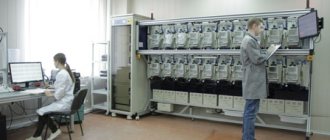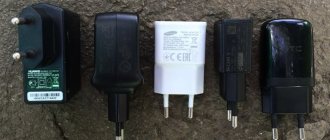Not to be confused with farad.
B Faraday's Constant
, symbolized
F
and sometimes stylized as ℱ, named after Michael Faraday.
In chemistry and physics, this constant represents the amount of electric charge per mole of electrons.[1] Has the current accepted value F
= 96485.33212… C mol−1.[2]
Since 1 mole of electrons = 6.02214076×1023 electrons (Avogadro's number), [3] Faraday's constant is equal to the elementary charge e
, the amount of electron charge multiplied by 1 mole: [4]
F
= 96485.3... C / (1 mol) = 96485.3... C / (6.022...×1023) = 1.60217663410×10−19 C =
e
One of the common ways to use Faraday's constant is electrolysis calculations. The amount of charge can be divided by the coulombs of Faraday's constant to find the chemical amount (in moles) of the element that has been oxidized.
F value
was first determined by weighing the amount of silver deposited in an electrochemical reaction in which a measured current was passed for a measured time, and by using Faraday's Law of Electrolysis.[5]
Michael Faraday - founder of the law of induction
The scientist who studied electricity was the great English physicist and chemist Michael Faraday (1791-1867). His contribution to the study of mutual magnetic induction between two connected circuits as a basis for the production of electricity is enormous.
As the son of a blacksmith, he was self-taught, thanks to books on chemistry and electricity that he read during his apprenticeship in a bookbinding shop—work he began at the age of 14. While still a teenager, he had the opportunity to attend lectures by the great chemist Humphry Davy at the Royal Institution. At the age of 21, Davy hired him as an assistant at the Royal Institution, where Faraday remained for the next 50 years, being appointed head of its laboratory in 1821. Although his lack of formal education left him with mathematical gaps, these were largely compensated for by his astonishing experimental intuition, which enabled him to become one of the most influential experimental researchers of all time.
In 1821, Faraday began to investigate the interaction between magnets and currents. He developed the concept of a line of force (a term he coined) to explain the shapes formed by iron filings near a magnet. Using this concept, in August 1831 he discovered mutual magnetic induction by noting the transient current induced in a coil when the current was turned on and off in a second coil. Both coils were wound on the same toroidal iron core.
In October 1831, Faraday observed self-induction resulting from the current induced in a solenoidal coil by the movement of a magnet inside its hole.
Faraday coined the term electromotive force for such an effect, and we still see it in use today.
In 1831, Faraday also created the idea of an electromechanical generator. He introduced the concept of dielectric constant and built the first variable capacitor in 1837. He also studied optics and the polarization of light with his friend Charles Wheatstone, discovering the Faraday effect (the rotation of polarized light as it passes through a magnetized region) in 1845.
Between 1846 and 1855, Faraday recognized the magnetic properties of matter and introduced the concept of diamagnetism. Developing the idea of lines of force, he introduced the concepts of electric and magnetic fields.
No less important were Faraday's discoveries in the field of chemistry, where he wrote several breakthrough works. He accumulated his colossal scientific output mainly in experimental studies, published in several issues between 1839 and 1855. He gave memorable lectures at the Royal Institution, was appointed a Fellow of the Royal Society in 1824, and received the Copley Medal twice, in 1832 and 1838, but renounced the title of nobility and the presidency of the Royal Institution (1864) and was reluctant to file any patents.
General information
When an electric current is passed through a solution, a physicochemical process called electrolysis occurs. It lies in the ability of substances to release secondary products. The term comes from the Greek λυσις, which means “destruction”. Its concept quite accurately describes the ongoing process.
Any substance consists of a collection of connected atoms and molecules that form ions when they lose or gain electrons. When their number exceeds the number of protons, the charged particle becomes negative. They call it a cation. If an ion loses an electron, it becomes positively charged. In this case it is called an anion.
In order for the bonds in a substance to be broken, thereby giving the electrically neutral ion a sign, some kind of action must be performed. For a liquid, this is electrolysis—the separation of particles under the influence of an electric current. But at the same time, elements have the ability to dissociate. In other words, to break apart when mixed into two or more molecular elements. In 1887, the scientist Svante Arrhenius was able to formulate a theory about dissociation. It was later supplemented by a provision on hydration.
As a result of a series of experiments, all liquid substances were divided into two types:
- Electrolytes are elements that conduct electric current. These include substances described by covalent polar and ionic bonds. For example, soluble acids, salts, bases.
- Non-electrolytes are solutions that are not capable of transmitting electricity through themselves. These are water-insoluble substances, organic compounds. For example, nitrogen, liquid oxygen.
Faraday, studying the process of ion decay, wondered whether it was possible to “catch” the emerging anions and cations. As it turned out, it is quite possible. To do this, you just need to create a redox process. As a result, cations can be collected on one side and anions on the other. Dissociation reactions in an electrolyte are classified as primary processes , and those that occur during reduction are secondary.
In fact, this division helped Faraday discover two laws. Today, with the help of electrolysis, certain grades of metals are obtained and surfaces are treated. On an industrial scale it is used to purify magnesium, sodium, and aluminum. Electrolysis is also used in wastewater filtration.
Test on the topic
- /10
Question 1 of 10Who discovered the phenomenon of electromagnetic induction at the same time as Faraday?
Start test
Hall of Fame
To get here, take the test.
- Andrey Krakov
8/10
- Dmitry Konopinsky
10/10
- Sergey Lutsenko
7/10
- Irina Filimonova
9/10
The essence of the electrolysis process
Electrolysis refers to the processes of redox reactions that occur under the forced influence of electric current. To perform this, a special container with an electrolytic solution is used, into which metal pins connected to an external power source are immersed.
The electrode connected to the negative pole of the current source is considered the cathode. It is at this point that the electrolyte particles are reduced. The other electrode is connected to the positive pole and is called the anode. In this area, the electrode substance or electrolyte particles are oxidized. Chemical reactions in this area occur differently, depending on the anode material and the composition of the electrolytic solution. Therefore, as chemistry states, electrodes in relation to the electrolyte can be inert or soluble.
The inert category includes anodes made from a material that does not oxidize during electrolysis. Examples include graphite or platinum electrodes. Almost all other types of metal anodes that are subject to oxidation during an electrolytic reaction are soluble.
Electrolytes most often serve as various types of solutions or melts, within which there is a chaotic movement of charged particles - ions. When they are exposed to electric current, they begin to move in a certain direction: cations - towards the cathode, anions - towards the anode. When they get on the electrodes, they lose their charges and settle on them.
Inductance
Passing along the circuit, the electric current contributes to the formation of a set of magnetic lines of force around it. According to the formula Ф = L×I, the flux Ф created by the magnet depends proportionally on the current strength I.
Thus, inductance L is understood as the coefficient of the ratio between the magnetic flux Ф and the current I flowing through the circuit. This value is calculated using the following formula:
L=F/I.
The unit of measurement for this physical quantity is Henry (H). 1 H is the inductance formed in a closed circuit in which the current changes by 1 Ampere, and the voltage in it is 1 Volt.
What have we learned?
Faraday, carrying out the electrolysis reaction of various substances, derived two laws. According to the first law, the mass of a substance deposited on the electrode is directly proportional to the amount of electricity passed through the electrolyte: m = kq. The second law reflects the relationship between the electrochemical equivalent and the equivalent mass of a substance: k = (1/F) μeq. Electrochemical equivalent is the amount of substance released during the passage of a unit of electricity. Equivalent mass is the amount of a substance that reacts with 1 mole of hydrogen.
Methods for determining VT using pulsed current
If a pulsed current flows through the phase interface, then great difficulties arise in determining the VT. There is no single method or instrument for determining VT during pulsed electrolysis. The difficulty of determining VT under pulsed electrolysis conditions is due to the fact that the current passing through the system is spent not only on the electrochemical reaction, but also on charging the electrical double layer. An electric current passing through an interface and causing an electrochemical transformation is often called Faraday current. The charging current is spent on charging the electrical double layer, reorganizing the solvent, the reagent itself, i.e. everything that creates the conditions for an electrochemical reaction to occur, so the expression for the total current passing through the electrochemical system will be as follows:
I = Iz + Iph, where Iz is the charging current, Iph is the Faraday current.
If it is not necessary to determine the absolute values of VT, then the ratio of the amount of electricity spent on dissolving the precipitate to the amount of electricity spent on its formation can be used as a criterion for assessing the efficiency of pulsed electrolysis.











